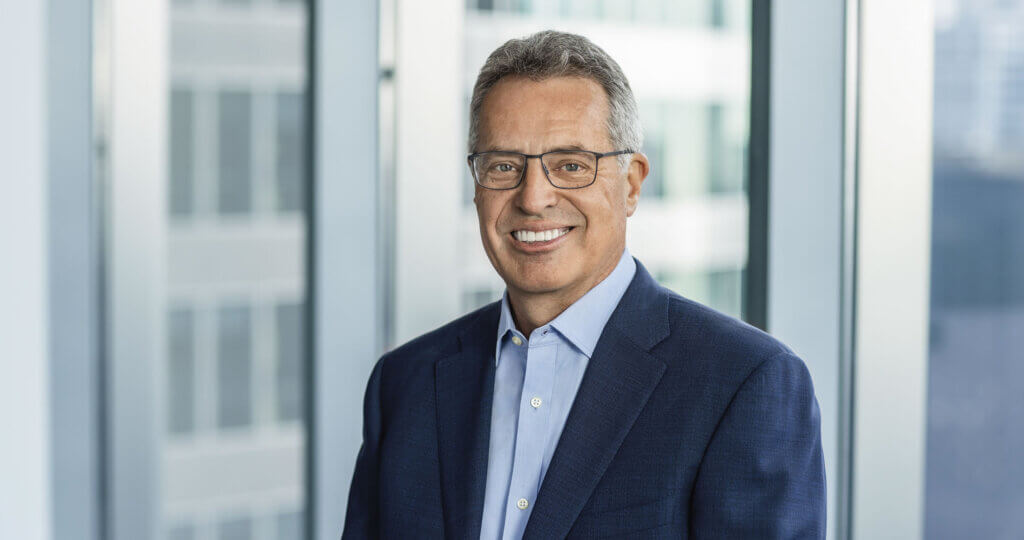Oakmark Fund - Investor Class
Average Annual Total Returns 03/31/2022
Since Inception 08/05/91 12.94%
10-year 13.80%
5-year 13.73%
1-year 13.12%
3-month -2.63%
Gross Expense Ratio: 0.93%
Net Expense Ratio: 0.91%
Expense ratios are based on estimated amounts for the current fiscal year; actual expenses may vary.
The net expense ratio reflects a contractual advisory fee waiver agreement through January 27, 2023.
Past performance is no guarantee of future results. The performance data quoted represents past performance. Current performance may be lower or higher than the performance data quoted. The investment return and principal value vary so that an investor’s shares when redeemed may be worth more or less than the original cost. To obtain the most recent month-end performance data, view it here.
“Fear and pessimism bring opportunities.” -Michael Price (1951-2022)
The commentary I wrote in 2016 for Oakmark’s 25-year anniversary looked back at the investment performance of the Fund and the stock market in the context of the many events in the world that investors worried about. The conclusion was that investors did just fine despite one crisis after another—and this conclusion still holds true today.
The Oakmark Fund was launched in 1991 shortly after Operation Desert Storm, in which the United States led a multi-nation coalition that prevented Iraq from annexing Kuwait. Today we remember that conflict mostly for how fast victory was achieved—six weeks of bombing followed by only four days of armed combat. But before the fighting began, there was tremendous fear that we could lose to Iraq’s highly trained Republican Army, that losing access to Middle Eastern oil could cause a global depression and that Iraqi use of weapons of mass destruction could kill people across the world. I remember one of Harris Associates’ founding partners, Myron Szold, saying, “Betting that the world is going to end is the worst bet you can make. You’re unlikely to win, and even if you do, you can’t collect.”
They say history doesn’t repeat; it rhymes. Many of today’s concerns about the tragedy in Ukraine seem analogous to the concerns investors had about war in Iraq when we were preparing to launch the Oakmark Fund in 1991. One analyst report last month grabbed headlines when it predicted a 10% probability that Russia’s attack on Ukraine would spread and end civilization. It may sound cavalier to ignore that risk, but using Myron’s logic, there is no payoff to structuring a portfolio for the end of civilization. We believe it is reassuring to put current events into context as we determine how to invest our assets today.
At Oakmark, we are long-term investors. We attempt to identify growing businesses that are managed to benefit their shareholders. We will purchase stock in those businesses only when priced substantially below our estimate of intrinsic value. After purchase, we patiently wait for the gap between stock price and intrinsic value to close.
Here is an update to the list I used in 2016 of troubling events we’ve been through since we started the Oakmark Fund in 1991. We’ve experienced the following, roughly by year:
- Operation Desert Storm
- Global Recession
- Hillarycare
- Fed Increasing Interest Rates
- Oklahoma City Bombing
- U.S. Government Shutdown
- Mad Cow Disease
- Asian Flu
- Clinton Impeachment
- Y2K
- Tech Bubble
- 9/11
- Afghan War
- Recession
- Iraq War
- SARS
- Hurricane Katrina
- Subprime Mortgage Crisis
- Lehman Bros. Bankruptcy
- Obamacare
- Real Estate Collapse
- Global Financial Crisis
- Greek Bailout
- S&P Downgrading U.S. Debt
- Oil Price Collapse
- Ebola
- Ukraine/Crimea/Russia
- Syrian Migrant Crisis
- Brexit
- Divisive Presidential Election
- Trump Impeachment
- China Trade War
- Covid-19
- Inflation Acceleration
- Ukraine/Russia
That’s an intimidating list. In 2016, I wrote that despite all that went wrong in the world, an investor who bought the S&P 500 in 1991 and held their position through 2016 would have accumulated more than nine times their initial capital. And that return is despite experiencing eight corrections and three bear markets. (Corrections are defined as a drop of at least 10% in the S&P 500, a level reached in the past quarter; and bear markets are declines of over 20%.) Though it is tempting to use world events to try to profitably move in and out of the market, it’s hard to improve on that buy-and-hold record by picking the right periods to sit out. Likewise, during those 25 years, the Oakmark Fund had periods of both good and bad returns relative to the S&P 500, but an investor who bought at the beginning in 1991 and held through 2016 ended with more than 19 times their starting capital. Those 25 years included many frustrating times when fundamental value investing was out of favor, but the 25-year return of over twice the S&P 500 would have been difficult to improve on by trying to guess when our investment style was going to be in favor.
Updating those numbers through the end of March 2022 shows that over the past six years the S&P 500 investor more than doubled their capital, going from nine times to more than 20 times the original value. That return was despite experiencing four corrections and two bear markets. And even though the Oakmark Fund hasn’t quite kept pace with the S&P 500 since 2016, our investors have grown their capital from 19 times to nearly 40 times the original value, roughly double the return of the S&P 500.
When confronted with global uncertainty, it can be difficult to imagine what the next year or even the next month will bring, and that can be scary. But at Oakmark, we are anchored by an investment philosophy that exploits deviations between current prices and long-term values. We only own stocks that are selling at unusually large discounts to what we believe those businesses will be worth roughly seven years from now. The events investors worry about might lead to significant reductions in current earnings, but that is usually transitory. It is rare for such issues to cause meaningful reductions in estimates of long-term business value. That is why in periods of high volatility, as occurred this past quarter, we see opportunity and often make more portfolio changes than usual.
My favorite sporting event is March Madness. The David versus Goliath early-round matchups are the most fun. Every couple of years a huge favorite gets knocked off by a small school we’ve barely heard of. In this year’s first round, oddsmakers gave perennial favorite and number-2 seed Kentucky a 95% chance of beating number-15 seed St. Peter’s. And though it ruined my bracket, watching the kids from St. Peter’s celebrate their win is what makes March Madness must-see TV.
We don’t know which game will produce the huge March Madness upset, but we’ve come to expect them. There are eight matchups annually between 1- or 2-seeds and 15- or 16-seeds. If each underdog has a 5% chance of winning, there is a 34% chance that a major upset happens in any given year. I wish investors could think about stock market corrections like March Madness upsets. They are to be expected, happening about every two years. And just like the winning bracket is not the one that anticipates the most upsets, the best long-term investment record is not the one that anticipates the most corrections. I’m not going to take the analogy so far as to say that you can actually enjoy the corrections as much as you enjoy the upsets, but you can use them to your advantage.
We encourage shareholders to have a target for the percentage of their assets they want to have invested in the stock market. When stock prices fall, stocks will fall below that percentage target. But individual investors often sell after stock prices fall. This not only hurts their returns, but it moves their portfolios further away from their targets. If you buy after your percentage in stocks has fallen below your target and sell after it has risen above the target, you can avoid the trap of buying high and selling low.
When world events cause the stock market to fall, don’t join in the panic. Check your portfolio. And if stocks have fallen meaningfully under your target weighting, take advantage of the cheaper prices. It won’t be as much fun as watching St. Peter’s celebrate, but it may ease the pain and boost your returns.
The S&P 500 Total Return Index is a float-adjusted, capitalization-weighted index of 500 U.S. large-capitalization stocks representing all major industries. It is a widely recognized index of broad, U.S. equity market performance. Returns reflect the reinvestment of dividends. This index is unmanaged and investors cannot invest directly in this index.
The Oakmark Funds’ portfolios tend to be invested in a relatively small number of stocks. As a result, the appreciation or depreciation of any one security held by the Fund will have a greater impact on the Fund’s net asset value than it would if the Fund invested in a larger number of securities. Although that strategy has the potential to generate attractive returns over time, it also increases the Fund’s volatility.
Because the Oakmark Select Fund and Oakmark Global Select Fund are non-diversified, the performance of each holding will have a greater impact on the fund’s total return, and may make the fund’s returns more volatile than a more diversified fund.
The stocks of medium-sized companies tend to be more volatile than those of large companies and have underperformed the stocks of small and large companies during some periods.
The information, data, analyses, and opinions presented herein (including current investment themes, the portfolio managers’ research and investment process, and portfolio characteristics) are for informational purposes only and represent the investments and views of the portfolio managers and Harris Associates L.P. as of the date written and are subject to change and may change based on market and other conditions and without notice. This content is not a recommendation of or an offer to buy or sell a security and is not warranted to be correct, complete or accurate.
Certain comments herein are based on current expectations and are considered “forward-looking statements”. These forward looking statements reflect assumptions and analyses made by the portfolio managers and Harris Associates L.P. based on their experience and perception of historical trends, current conditions, expected future developments, and other factors they believe are relevant. Actual future results are subject to a number of investment and other risks and may prove to be different from expectations. Readers are cautioned not to place undue reliance on the forward-looking statements.
All information provided is as of 03/31/2022 unless otherwise specified.




